Unbagging The Incredible Hulk #1
The Incredible Hulk, Vol. 1
#1O
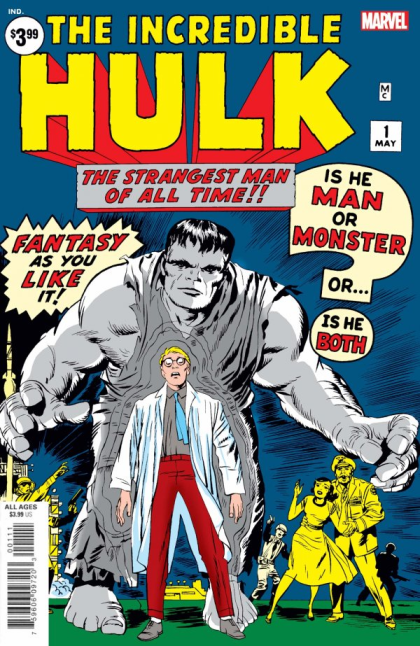
Release: Jan 11, 2023

Meet the Incredible Hulk-for the first time! Re-experience the landmark issue that introduced the strangest being of all. Is he man or monster…or is he both? When puny scientist Bruce Banner’s gamma bomb experiment is interrupted by young Rick Jones, Banner charges onto the test site to rescue the reckless teen-and ends up caught in the blast! When the sun falls, a hulking new form rises-with gray skin, not green! The world is his-for he is the Hulk! But who, or what, is the Gargoyle? What are his plans for this newly minted monster? And will it be the Hulk or Bruce Banner who triumphs over this Iron Curtain evil? It’s one of the all-time great Marvel comic books, boldly re-presented in its original form, ads and all! Reprinting INCREDIBLE HULK (1962) #1. Kids to Adults
Fool! I am glad it happened!! I’d rather be me than that puny weakling in the picture!
Okay, obviously I’m not Unbagging a real copy of The Incredible Hulk #1, because I don’t have that money. (I’m certainly not making that kind of money from doing this, anyway.)
So, what we’re talking about today is a facsimile edition, a modern reprint that replicates the original pretty much exactly, to an extent that most reprints typically do not, albeit on better paper and with modern printing technology. (And also, modern pricing.)
Honestly, that’s really what I want to talk about more than the story itself, as I’ve picked up a few of these facsimile editions over the years, from both Marvel and DC, and, well…

They serve as a kind of time capsule in a way that other reprints – particularly issues that are reprinted in hardcover or trade paperback editions – simply do not, as the facsimile editions contain all, or at least most* of the original content as it was originally presented, including the ads.
*I’ve heard that not all of the original ads are reprinted, but I’ve never done a comparison on any of them to be able to comment on that.
Some of the issues that get the facsimile treatment – like this one – make sense, as they’re first issues, or some other milestone, but other instances have baffled me, as there is no immediate explanation as to why some random comic from the ’80s, for example, gets reprinted. I imagine there is an explanation, as it may contain the first appearance of a character who is part of a significant new storyline or something, but I can’t say for certain, as I haven’t picked up all of the editions that have been available over the past few years.
As for this one, obviously it’s significant because it marks the first appearance of the Hulk in a story that most people who don’t read comics and only know the character from TV and movies probably aren’t familiar with.
The most well-known versions of the story of the Hulk outside of comics involve experiments that go awry, which is true of this comic as well, but in a different way. Whereas the experiments outside of the comics involve making deliberate changes to human beings – to make them stronger – here, the experiment involves making the world’s deadliest bomb, one powered by Gamma Rays (the one common denominator across all Hulk media).
Where things go awry on TV and in the movies is when Banner runs the experiment on himself. Here, the problem is that just as they’re about to detonate the “G-Bomb,” Banner notices that some boneheaded teenager has driven out onto the testing grounds. Banner tells his assistant, Igor, to halt the countdown while he rushes out to get the boy to safety. Igor, however, does nothing of the sort.
Earlier, we saw Igor complaining – sensibly, it seems – that Banner is being rash, and that they shouldn’t be conducting this test of the G-Bomb unless and until some other scientists are able to review Banner’s work. What if he made an error?
“I don’t make errors, Igor,” Banner confidently insists.
But despite Banner’s egotism, Igor wasn’t being sensible – he was actually a commie spy who was attempting to steal Banner’s work and send it back to Mother Russia!
Thus, when Banner rushes off to save that impetuous teen, Igor sees that the best option for completing his mission is to simply do nothing, allowing Banner to be obliterated by his own creation, freeing Igor to find Banner’s notes at his leisure.
However, while Banner does get hit with the full force of the deadly rays of the G-Bomb – after pushing the teen, who had driven out onto the testing grounds on a dare – to safety in a trench, he somehow manages to survive.
Back at the base, both Banner – who is more surprised than anyone that he’s still alive – and Rick Jones, the boy he saved, are being held for observation. (After being saved by Banner, Rick rushed him back to the base to return the favor.)
Hours pass, and as the sun sets, Banner undergoes a strange transformation, becoming a brutish, gray-skinned, hulking figure, one who has no interest in remaining confined and smashes his way out through the wall.
Yes, as originally conceived, the Hulk was supposed to have gray skin, and his transformations were tied to the time of day, with him becoming the Hulk after sunset, and turning back into (puny) Banner after the sunrise.
The cause of his transformations would change for the sake of narrative, as changing in response to anger presented a lot more story opportunities, but the skin tone change was more the result of the vagaries of printing comics in the 1960s. The gray used by the colorist resulted in something with a green tint coming off the printing press, and ultimately Stan Lee simply decided that he liked that better. (The gray skin had been chosen in an effort to make Hulk ethnically ambiguous.)
Hulk’s personality would change as well. Here, in his earliest adventures, he’s not as driven by rage so much as by contempt for those who are smaller and weaker than he is. He’s also considerably more articulate, and mostly attempts to avoid confrontation – though wanting to be left alone has been a consistent trait throughout the decades – but will bring any confrontation that happens to a swift conclusion.
Said confrontations are mostly with the military around the base, but also with Igor, who had been snooping around Banner’s place looking for the info on the G-Bomb. Though he didn’t remember that he was Banner, Hulk felt a compulsion to return home (with Rick following him) where he knocks Igor out.
Then Hulk is presented with an uncomfortable truth, one that indicates that maybe he really isn’t as big and strong as he thinks he is.
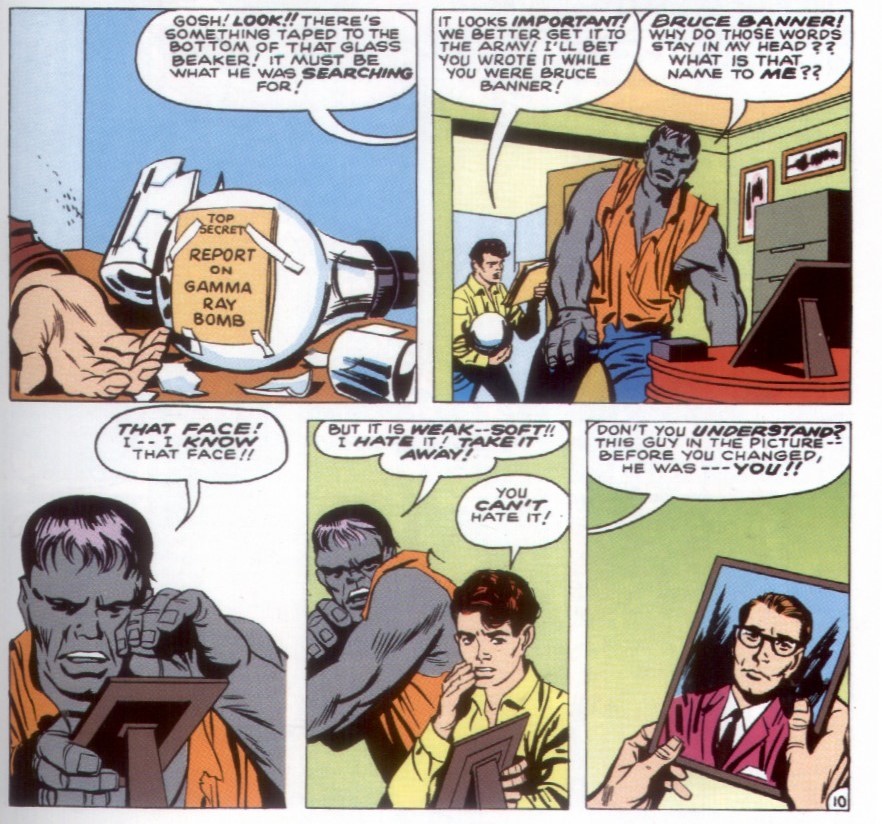
Shortly after that, the sun rises and he turns back into Banner, just in time for the military – who had tracked Hulk there – to show up and wonder where the big monster went.
For some reason, Betty Ross, daughter of General Ross who, like Hulk, hates Banner for being a puny weakling, accompanied her father and the troops in their pursuit of the brutish monster. There seems to be a lot of Betty just being around for no apparent reason other than to have some flirtatious moments with Bruce. (When it happens at Banner’s place, it seems to annoy Rick. I’m assuming it’s meant to be a sign of immaturity on his part, indicating that maybe he hasn’t quite gotten past a childhood fear of cooties.)
Anyway, no one suspects that Banner and Hulk are one and the same because everyone is dumb, and the military takes Igor into custody and takes possession of the secrets of the G-Bomb as well, while Banner and Rick just hang around to see if the sunset brings about another change.
Despite being locked up, Igor manages to send a secret message to his Soviet masters, in particular, the gruesome Gargoyle, a hideously mutated super-genius that everyone fears. (Because he’s ugly.)
Igor’s message about the Hulk piques his interest, and so the gruesome Gargoyle heads to the U.S. of A to capture the Hulk.
Banner, meanwhile, decides that if he’s going to change again, he wants to do it out in the open, and Rick is still around for some reason, so the two of them drive out into the desert. Unfortunately, the sun sets while they’re still driving, and they end up crashing after Banner transforms.
Turns out that they crashed not far from the home of General Ross and, more to the point, Betty, and Banner’s attraction to Betty is something that the Hulk retains, so he heads over to see her, despite Rick’s protest (which in this context is more sensible than his earlier saltiness about Bruce being sweet on her).
Hulk finds Betty taking her evening constitutional, and she passes out from fear, which ultimately proves to be the source of the ongoing personal hatred General Ross feels towards the Hulk.
Hulk (and Rick) have bigger problems, however, as they’re abducted by the Gargoyle and jetted off behind the Iron Curtain.
However, in the course of their travels they hit daylight and Hulk turns back into Banner. Upon seeing this, the Gargoyle is distraught. He recognizes Banner as the world’s most famous atomic scientist and believes that Banner has willingly made himself into a monster, in contrast to the Gargoyle who has been forced to live as a monster. It leads the Gargoyle to weep.
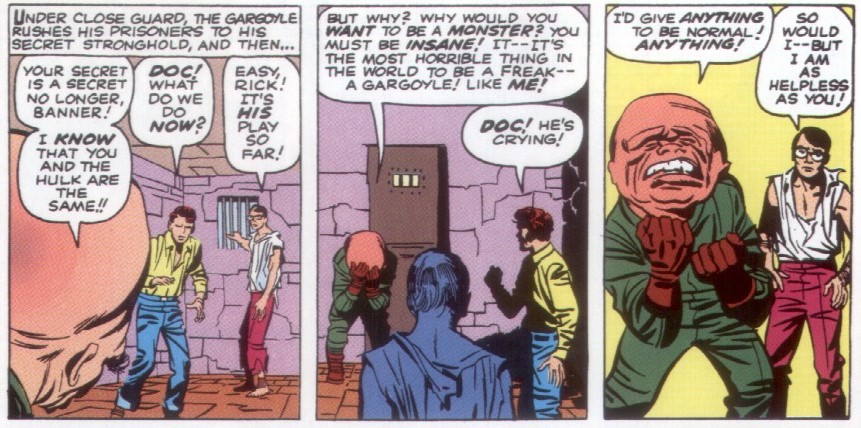
Finding that they share a common problem that transcends their political and ideological differences, Banner decides to use the power of radiation to cure the Gargoyle, because sure, obviously it’ll be that easy.
And it is. As Ryan George would put it, it’s super-easy, barely an inconvenience.
With his humanity restored – but his super-genius lost – the Gargoyle loads Banner and Rick up onto his personal escape rocket and sends them back to America while he, happy to die as a man now that he no longer has to live as a monster, blows himself and his former comrades to hell.
And that’s it. That’s the end of the Hulk’s first adventure.
From the perspective of someone who is not a kid reading it in the early 1960s, it’s not great! Honestly, not all that much happens in it, and what does happen is incredibly underdeveloped and rushed, and the action is pretty underwhelming. There’s nowhere near the level of mayhem and destruction one would eventually come to expect from the Hulk.
In fairness, it’s clear that the basic concept of the Hulk still needs fleshing out, but in my somewhat jaded view the first adventure of the not-yet Jade Giant isn’t an especially auspicious beginning. It’s an interesting artifact – especially in this facsimile edition with its ads for 8MM motion picture projectors and complete 4 piece matched sets of luggage – but judged on its own merits, it’s kind of boring, despite the fast pace. Or maybe because of it, given that there’s no time taken to really develop or explain anything. Stuff just happens and then keeps happening, even though hardly anything is actually happening. It’s confounding.
Still, the Kirby art is dynamic, and the Lee dialogue is bombastic, and even without the benefit of hindsight it seems like something that has potential. (Which, obviously, it did.) Had I been a kid back then, a decade or so before I was born, I probably would have dropped my 12 cents on the next issue.
I do find it interesting that the origin of the Hulk has been changed in other media – I do seem to recall that the early 1980s’ Hulk Saturday morning cartoon hewed a little closer to the early comics, though it’s over 40 years, so I don’t remember if they kept the comics origin – but I imagine it’s because eventually the idea of a Bruce Banner who was striving to create the world’s deadliest bomb made him seem much more monstrous than his alter-ego ever could be. I know that with later development the idea was that he was trying to build a weapon so terrible that it would make the world recoil in horror and step back from the brink, but even so. It’s a yikes from me, Bruce.
I also find it odd that Rick Jones has never popped up in any of the adaptations that I’ve seen, given what a pivotal role he played not only in the origin and early adventures of the Hulk, but in the larger Marvel Universe. I mean, he was even Bucky for a while.
I know there are quite a few animated shows that have come out since the ’90s that I’ve never seen. Has he popped up in any of them?
In any case, as I said earlier, the whole point of this post was just to talk about the facsimile editions generally and how I think they’re neat (even if I’m not particularly impressed by the stories they’re facsimile-ing).
One other thing I was going to mention is that a while back I realized that it makes things much easier if I just copy and paste info about the comics I’m discussing right out of my CLZ database.
I remove some of the info after pasting, but what you see at the top of the page is more or less how it looks in the database – by the way, you can see my comics in CLZ by clicking on the link over to the right – though in this case I removed the information the entry had for Creators, given that it looks like this:
Creators
| Penciller | Stan Lee |
| Inker | Editor Writer |
| Colorist | Jack Kirby |
| Letterer | Paul Reinman | Stan Goldberg |
| Cover Artist | Stan Lee |
Of course, the book itself doesn’t list any credits other than “By Stan Lee & J. Kirby” on the first page, but I feel like someone has to have provided better information to the CLZ core database than that.
The Grand Comics Database (GCD) lists the credits as follows, breaking it down by each part of the story:
The Coming of the Hulk, Part 1
Script: Stan Lee (signed as Stan Lee [early- to mid-career])
Pencils: Jack Kirby (signed as J. KIRBY)
Inks: Paul Reinman
Colors: Stan Goldberg
Letters: Ray Holloway; Artie Simek (logo and title on splash page)
The Coming of the Hulk] Part 2: The Hulk Strikes!
Script: Stan Lee (signed as Stan Lee [early- to mid-career])
Pencils: Jack Kirby (signed as J. KIRBY)
Inks: Paul Reinman
Colors: Stan Goldberg
Letters Ray Holloway; Artie Simek (logo and title)
The Coming of the Hulk] Part 3: The Search for the Hulk
Script: Stan Lee (signed as Stan Lee [early- to mid-career])
Pencils: Jack Kirby (signed as J. KIRBY)
Inks: Paul Reinman
Colors: Stan Goldberg
Letters: Artie Simek
The Coming of the Hulk] Part 4: Enter…the Gargoyle!
Script: Stan Lee (signed as Stan Lee [early- to mid-career])
Pencils: Jack Kirby (signed as J. KIRBY)
Inks: Paul Reinman
Colors: Stan Goldberg
Letters: Artie Simek
The Coming of the Hulk] Part 5: The Hulk Triumphant!
Script: Stan Lee (signed as Stan Lee [early- to mid-career])
Pencils: Jack Kirby (signed as J. KIRBY)
Inks: Paul Reinman
Colors: Stan Goldberg
Letters: Artie Simek

Born and raised in the sparsely populated Upper Peninsula of Michigan, Jon Maki developed an enduring love for comics at an early age.

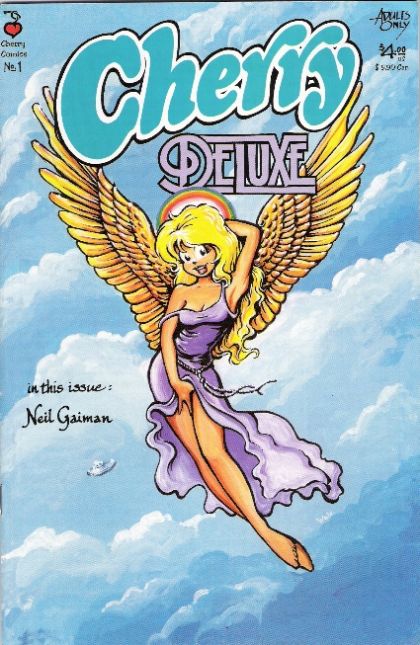
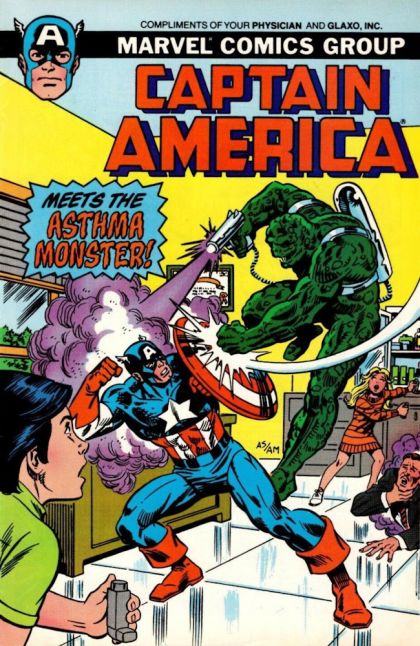
1 thought on “Unbagging The Incredible Hulk #1”